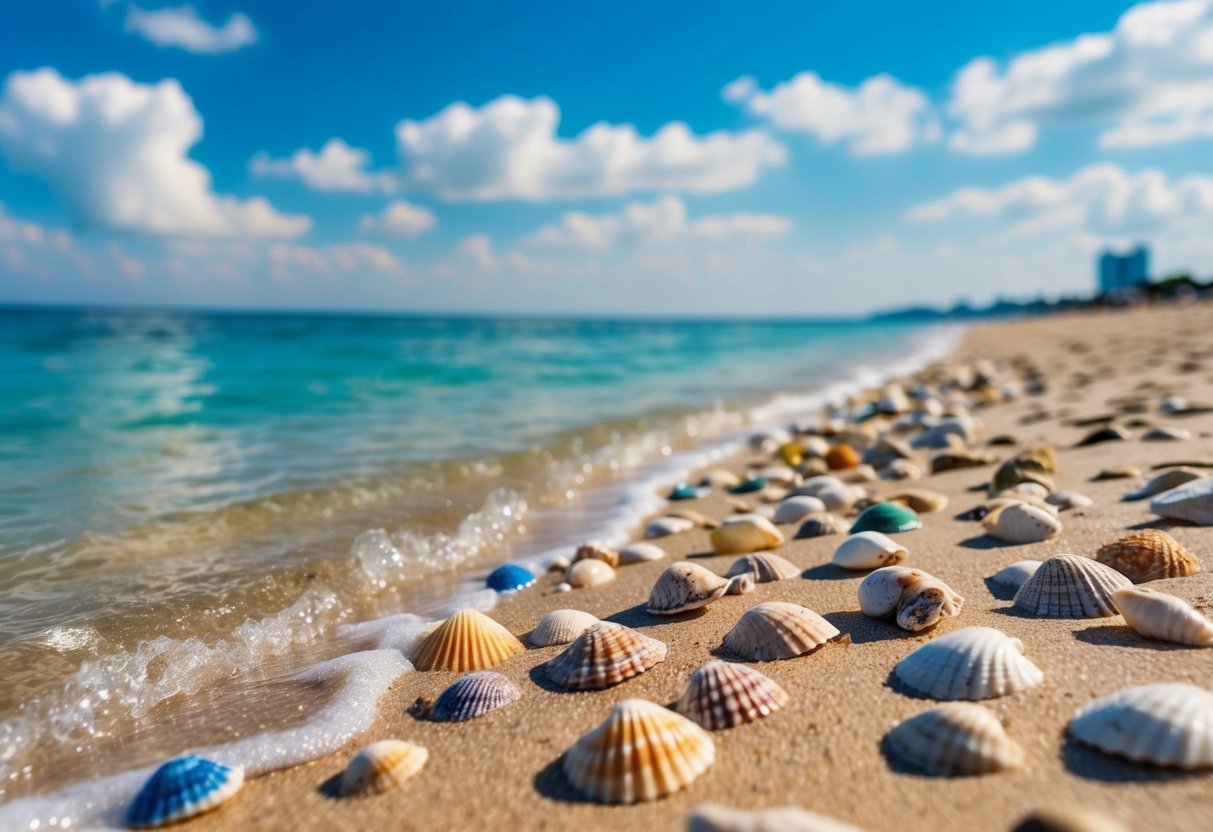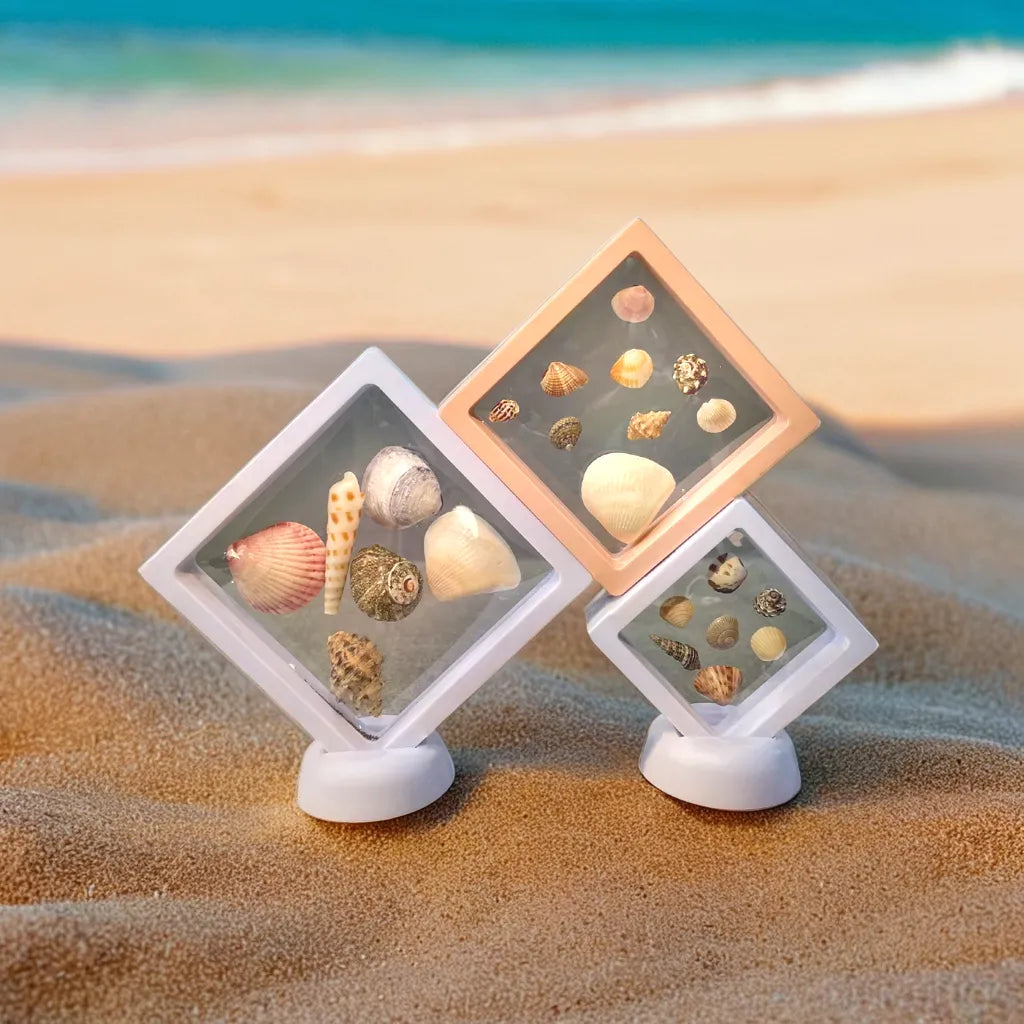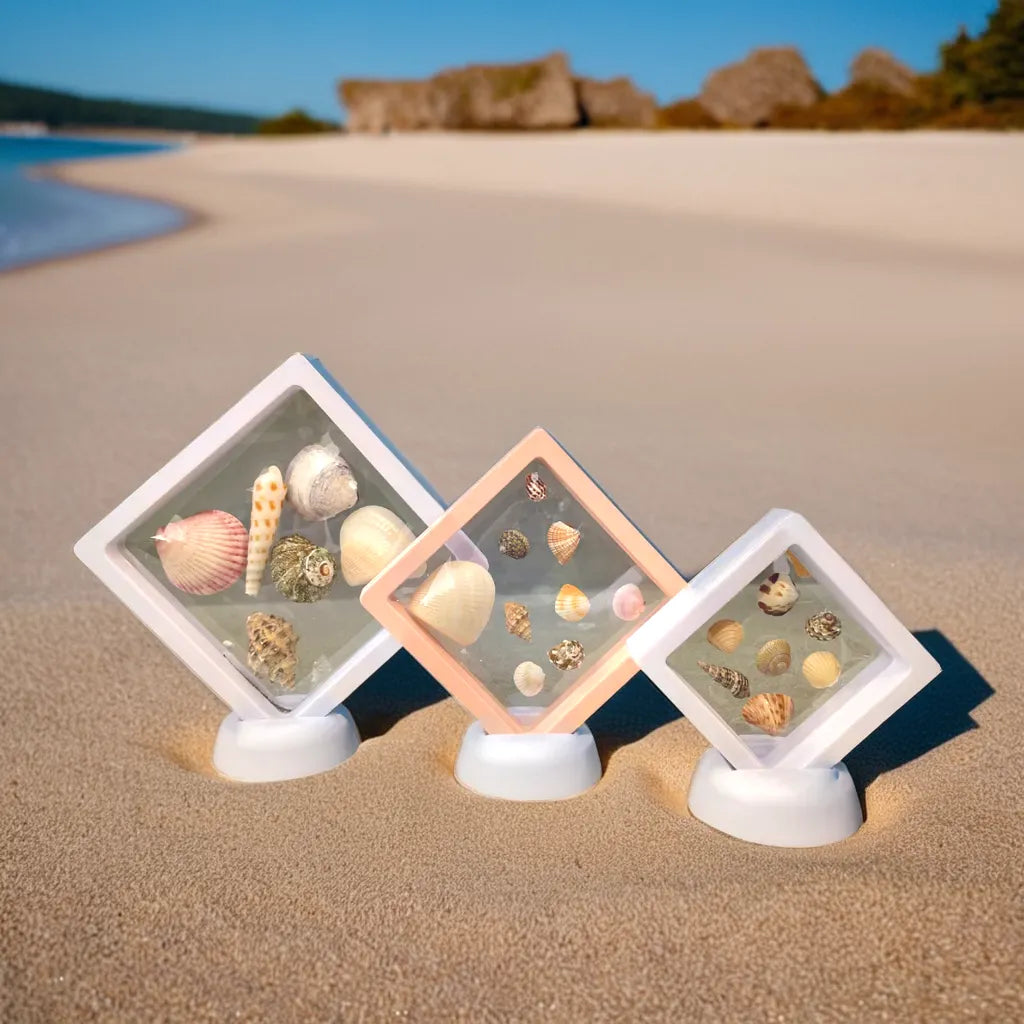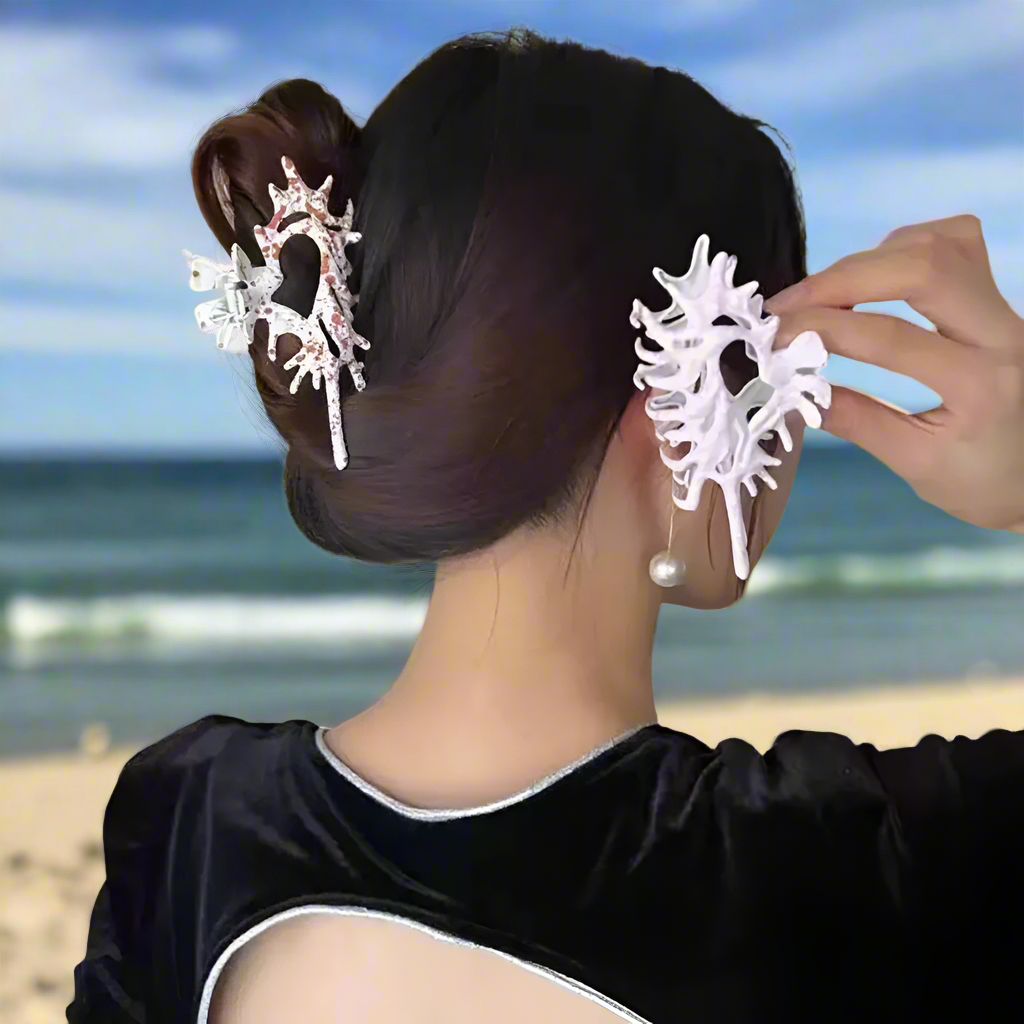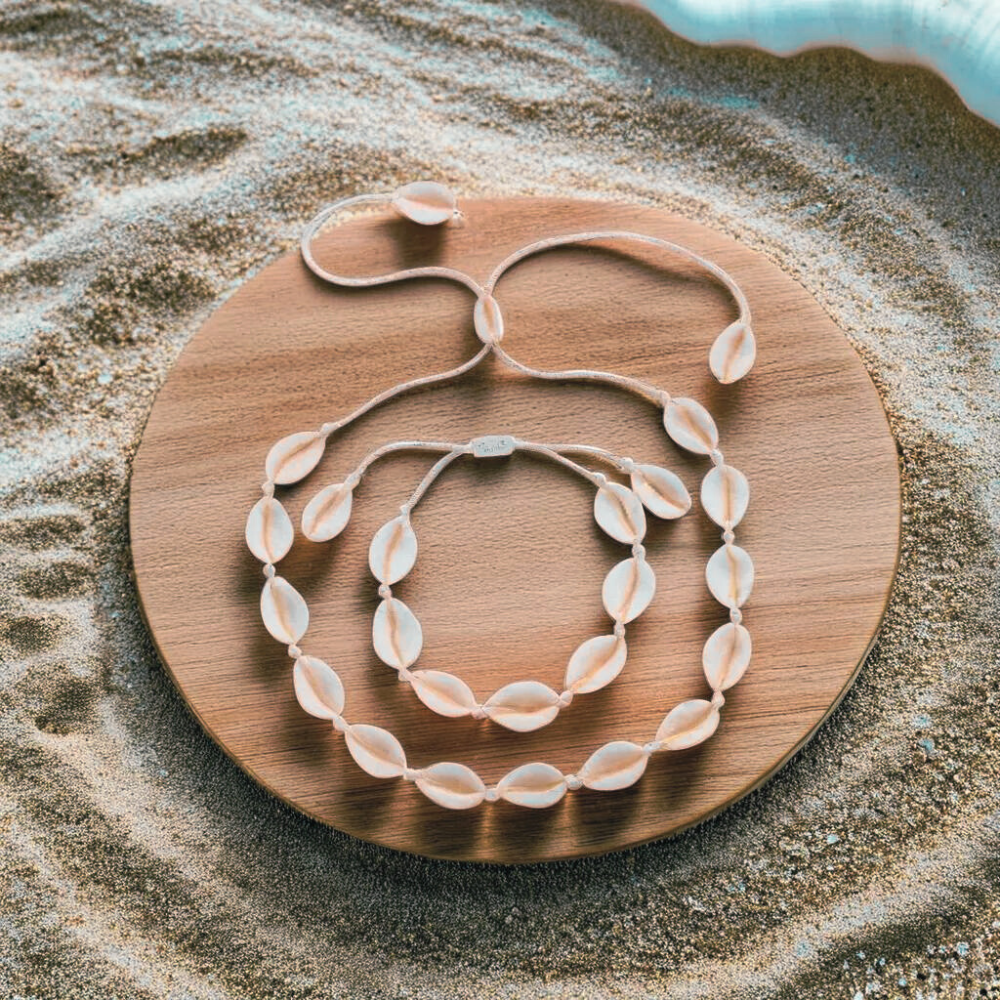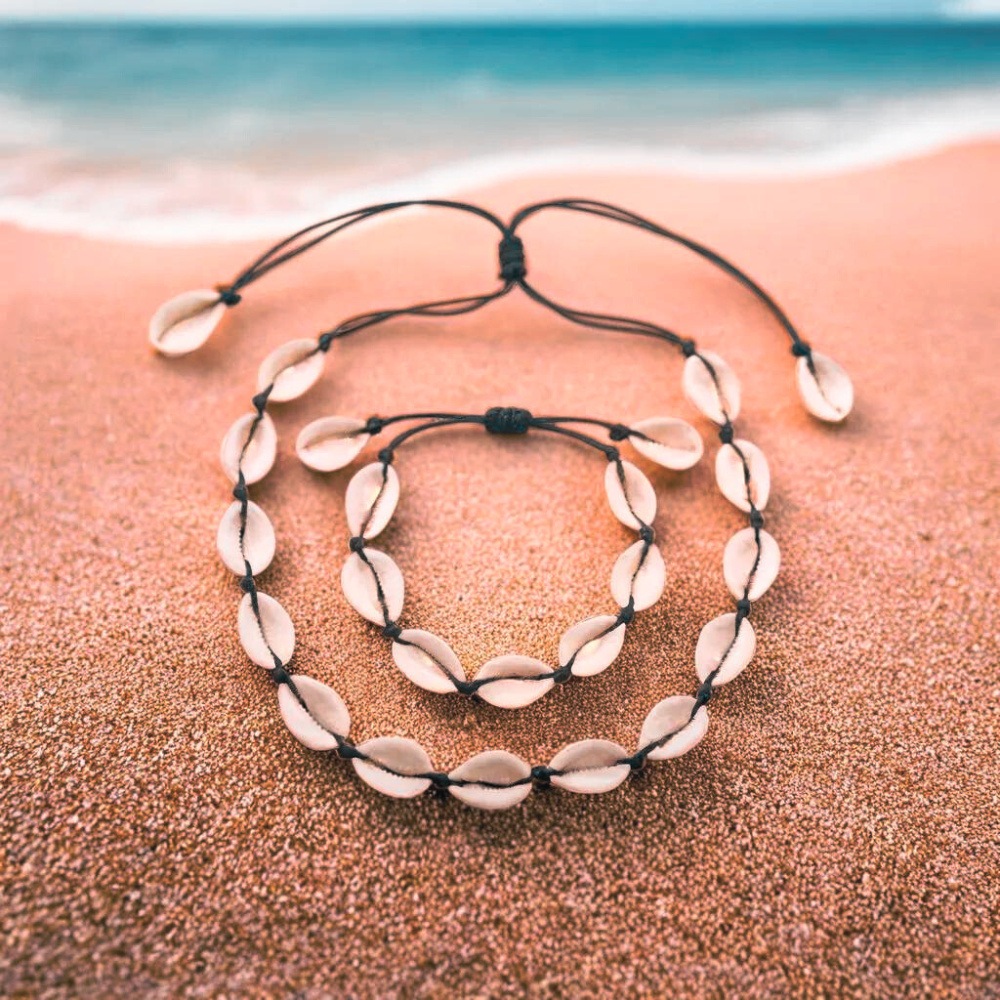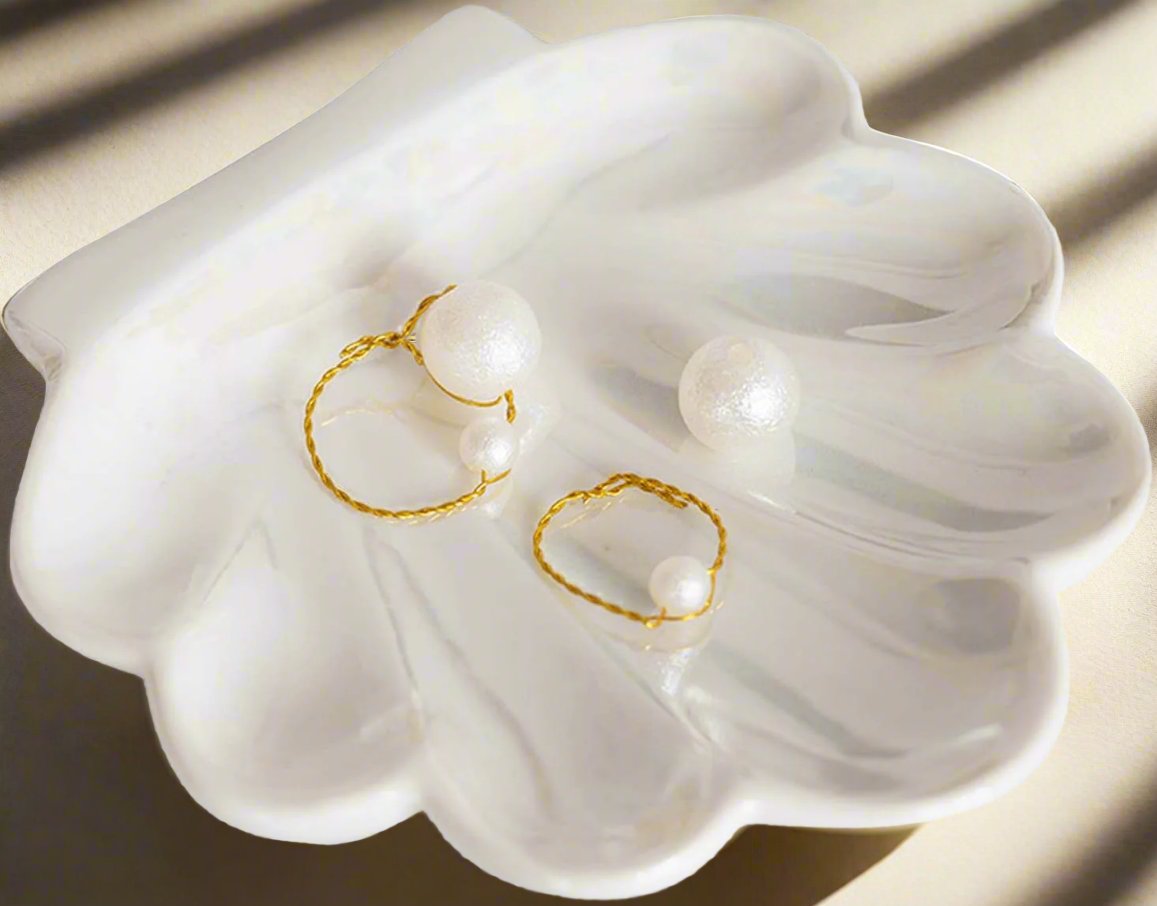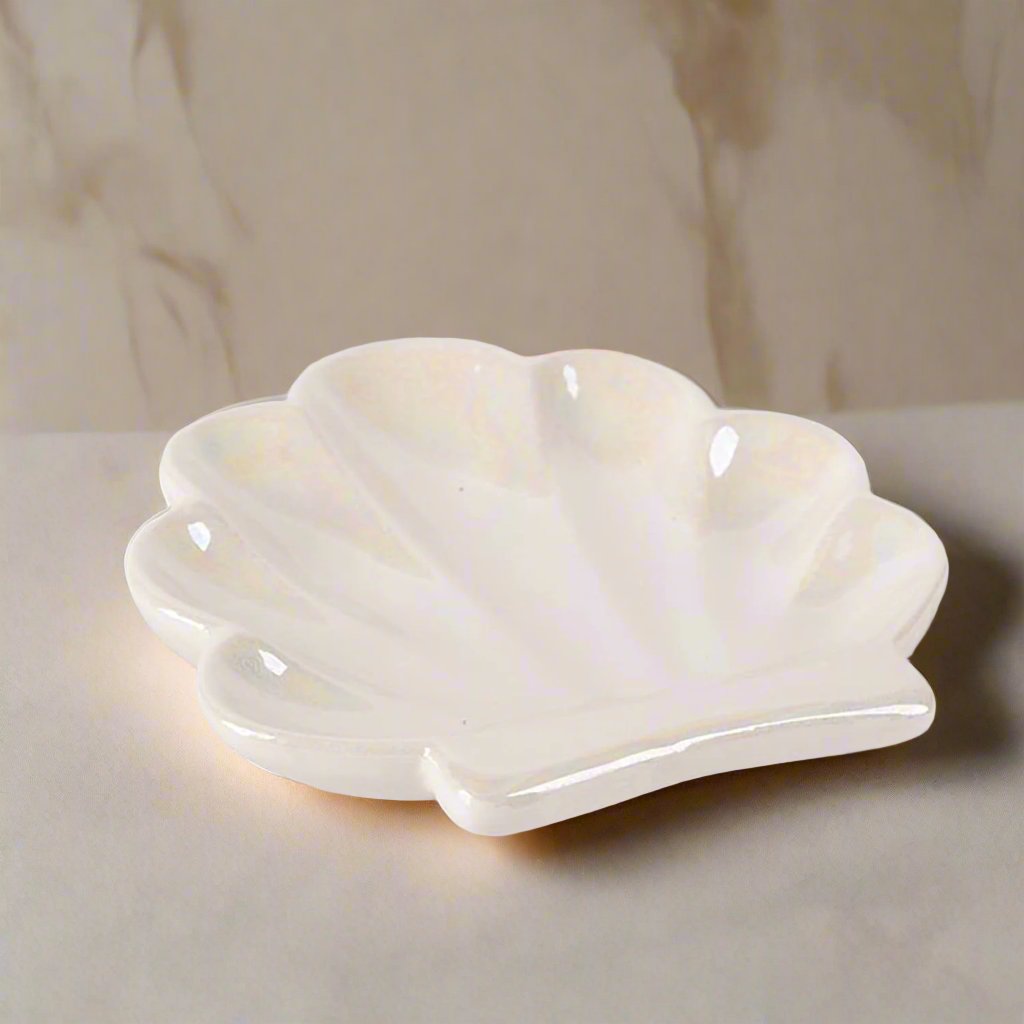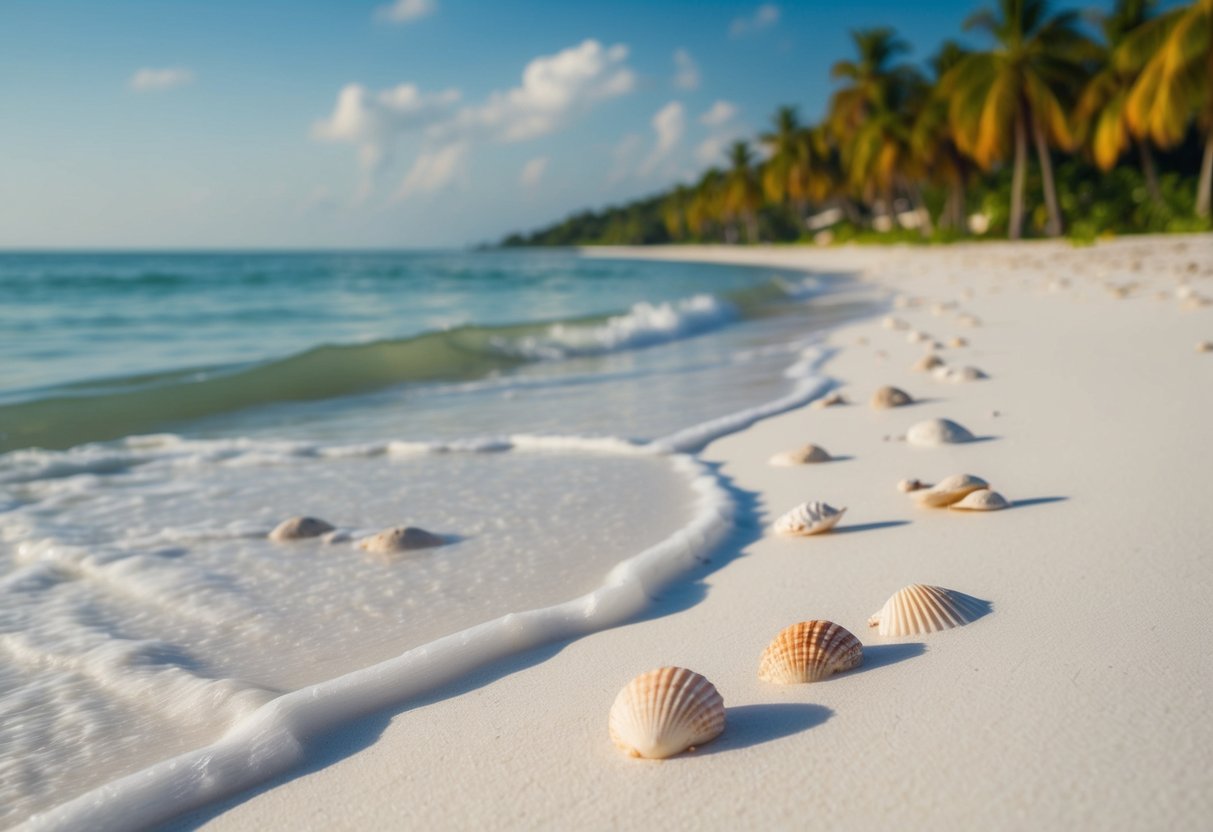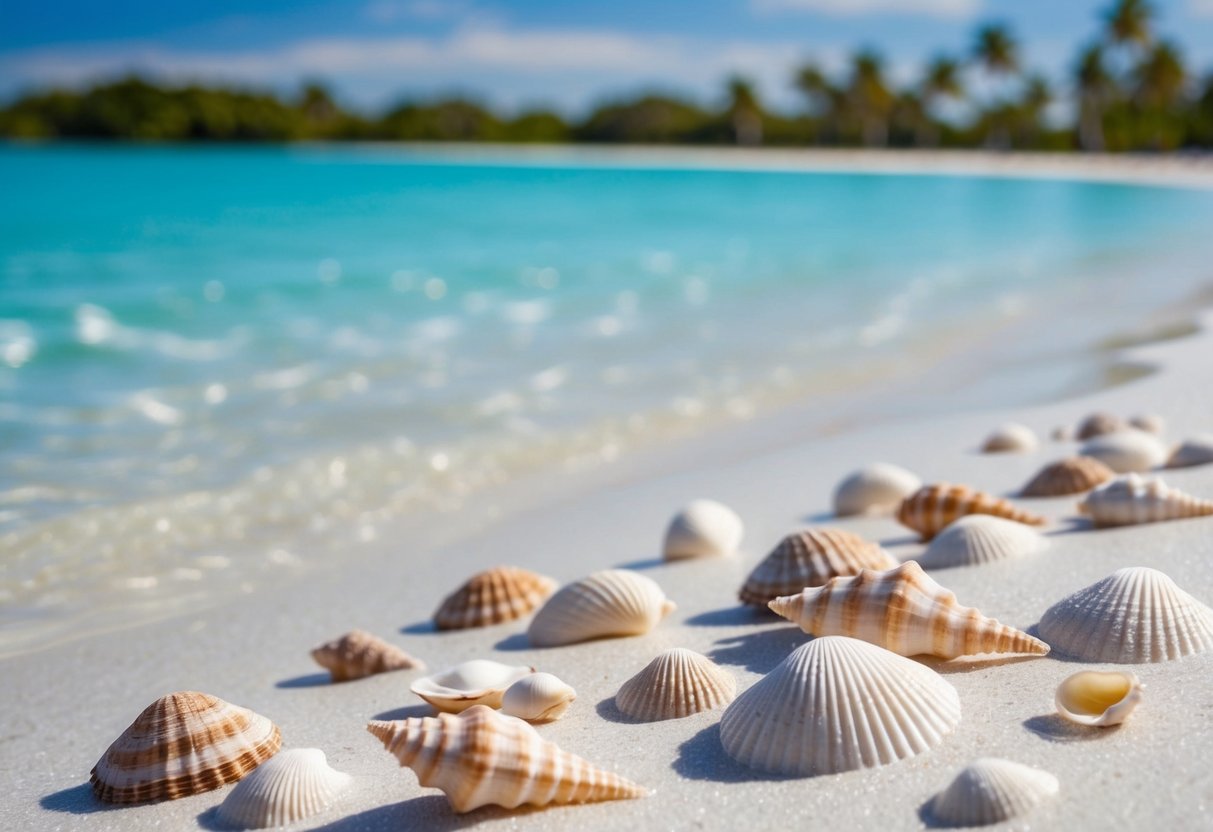Japan's coastlines offer a treasure trove of seashells waiting to be discovered. From the tropical beaches of Okinawa to the rugged shores of Hokkaido, shell collectors can find a diverse array of specimens. The country's unique geography and marine ecosystems create ideal conditions for many shell-producing creatures to thrive.
 Beach combing is a popular activity for both locals and tourists in Japan. Collectors can find everything from tiny star-shaped foraminifera shells to large conch and bivalve shells. Some beaches are known for specific types of shells, while others offer a wide variety of species. Proper beach etiquette and conservation practices are important to preserve these natural wonders for future generations to enjoy.
Beach combing is a popular activity for both locals and tourists in Japan. Collectors can find everything from tiny star-shaped foraminifera shells to large conch and bivalve shells. Some beaches are known for specific types of shells, while others offer a wide variety of species. Proper beach etiquette and conservation practices are important to preserve these natural wonders for future generations to enjoy.
 Beach combing is a popular activity for both locals and tourists in Japan. Collectors can find everything from tiny star-shaped foraminifera shells to large conch and bivalve shells. Some beaches are known for specific types of shells, while others offer a wide variety of species. Proper beach etiquette and conservation practices are important to preserve these natural wonders for future generations to enjoy.
Beach combing is a popular activity for both locals and tourists in Japan. Collectors can find everything from tiny star-shaped foraminifera shells to large conch and bivalve shells. Some beaches are known for specific types of shells, while others offer a wide variety of species. Proper beach etiquette and conservation practices are important to preserve these natural wonders for future generations to enjoy.
1) Arahama Beach
Arahama Beach sits on the coast of Sendai City in Miyagi Prefecture. It offers a peaceful spot for beachcombers and shell enthusiasts. The beach stretches for several kilometers, giving visitors plenty of space to explore. After the 2011 tsunami, Arahama Beach underwent restoration efforts. This process brought new sand and shells to the shoreline. As a result, the beach now boasts a fresh selection of seashells for collectors. Visitors can find various types of shells at Arahama Beach. Common finds include clam shells, scallops, and oyster shells. Lucky beachcombers might also discover more unique specimens washed up by the waves. The best time for shelling at Arahama Beach is during low tide. Early morning visits often yield the best results. After storms, new shells may appear on the beach, creating exciting opportunities for collectors. Arahama Beach provides a mix of shelling and scenic views. Visitors can enjoy the sight of pine trees lining parts of the coastline while searching for shells. The beach's quiet atmosphere makes it ideal for a relaxing day of beachcombing.2) Katsurahama Beach
Katsurahama Beach is a scenic spot in Kochi Prefecture, Japan. It's known for its crescent-shaped shoreline and beautiful views of the Pacific Ocean. The beach features a mix of sand and pebbles. While swimming isn't allowed due to strong currents, it's a great place for shell hunting and beach walks. Katsurahama is surrounded by pine trees, adding to its natural beauty. Visitors can enjoy strolling along the promenade that runs behind the beach. A notable landmark is the bronze statue of Ryoma Sakamoto, a famous historical figure. This statue draws many tourists to the area. The beach is part of Katsurahama Park, which offers additional attractions. These include an aquarium and a small market selling local seafood. Katsurahama is easy to reach from Kochi City. Buses run regularly from Kochi Station, making it a convenient day trip destination. For shell collectors, the beach's varied shoreline provides interesting finds. The mix of sand and rocks creates diverse habitats for sea life.3) Amami Oshima
Amami Oshima is a hidden gem among Japan's islands. It sits between Kyushu and Okinawa, offering a perfect blend of mainland and tropical vibes. The island boasts stunning beaches with pristine sand and clear waters. Shelling enthusiasts will find plenty to explore along its coastline. Tokuhama Beach and Yadon Beach are popular spots for beachcombers. Visitors can spend hours searching for unique shells and coral fragments washed up by the waves. The island's coral reefs contribute to the variety of shells found on its shores. Beachgoers might discover colorful pieces from various marine species. Amami Oshima's subtropical climate makes it ideal for year-round shelling. The best times are often after storms or during low tide when new treasures are revealed. While enjoying shell hunting, visitors can also take in the island's natural beauty. Mangrove forests and lush vegetation create a picturesque backdrop for beach adventures.4) Okinawa Beaches
Okinawa's beaches offer excellent shelling opportunities. The islands' diverse marine life and coral reefs create ideal conditions for finding a wide variety of seashells. Many beaches in Okinawa are known for their shell-collecting potential. Nishihara Kira Kira Beach, part of a marine park, is a popular spot for beachcombers. Its 550-meter stretch of soft white sand is perfect for shell hunting. After storms or typhoons, the beaches often yield a bounty of shells. This is when collectors have the best chance of finding unique specimens. However, caution is advised during these times due to potential safety hazards. The Yaeyama Islands, particularly Miyakojima, are worth exploring for shell enthusiasts. Yonahamaehama Beach on Miyakojima is known for its pristine white sand and shell-collecting possibilities. Transportation to some beaches can be challenging, especially from military bases. Joining organized beach tours or renting a car can help shell collectors access more remote locations. Okinawa's beaches offer a mix of common and rare shells. Collectors should respect local regulations and ecosystems when shelling. Taking only a few specimens and leaving live shells undisturbed ensures the sustainability of this enjoyable pastime.5) Tsutsukihama Beach
Tsutsukihama Beach stands out as a top shelling spot in Japan. Its white sandy shores and crystal-clear waters create an ideal environment for shell hunting. Visitors can find a variety of small seashells along the beach. The clear water allows beachcombers to spot shells in the shallows, making for an enjoyable search experience. The beach features three beach houses that offer resting places for visitors. These spots provide a convenient base for shell collectors to take breaks and store their findings. Tsutsukihama's beauty extends beyond its shells. The beach's pristine conditions attract small fish, which swimmers can observe in the transparent waters. While not solely focused on shelling, the beach's natural features make it a prime location for shell enthusiasts. Its mix of sandy areas and nearby rocky spots increases the chances of finding diverse shell types.6) Shirahama Beach
Shirahama Beach in Wakayama Prefecture is a popular destination for shell collectors. The beach's white sand stretches for about 1 kilometer along the coast. Visitors can find various types of shells washed up on the shore. Common finds include clam shells, scallop shells, and small conch shells. The best time for shelling is early morning or after high tide. This is when new shells are most likely to be exposed on the beach. Shirahama Beach offers more than just shelling. It's known for its clear waters and scenic views. The area also has hot springs nearby for relaxation after a day of beachcombing. Families often enjoy this beach due to its gentle waves and shallow areas. It's a safe spot for children to search for shells while playing in the water. Remember to respect the beach environment. Take only a few shells and leave the rest for others to enjoy. This helps preserve the natural beauty of Shirahama Beach.7) Shimoda Beaches
Shimoda, located at the southern tip of Izu Peninsula, boasts some of Japan's most beautiful beaches. These shores are known for their soft white sand and clear blue waters. Shirahama Ohama Beach is the largest and most popular in Shimoda. This 700-meter stretch of coastline attracts surfers and beachgoers alike. Its vermilion torii gate adds a picturesque touch to the scenery. Tatadohama Beach is another favorite spot in Shimoda. Visitors often enjoy surfing and sunbathing here. The beach's calm waters make it suitable for families with children. Shimoda's beaches offer more than just sand and surf. Some feature unique attractions like heart-shaped caves and areas for sand skiing. These diverse coastal areas provide something for every type of beach lover. The crystal-clear waters around Shimoda's beaches make them ideal for shelling. Beachcombers can find various types of shells along the shoreline. The best time for shelling is often early morning or after a storm.8) Yonaha Maehama Beach
Yonaha Maehama Beach is a top spot for shelling in Japan. It sits on Miyako Island in Okinawa Prefecture. The beach stretches for 7 kilometers along the island's west coast. The sand is white and soft. The water is clear and blue. Visitors can find many types of shells along the shore. People can walk for hours looking for shells. The beach's length gives plenty of space to search. Unique shells wash up from the nearby coral reefs. The best time for shelling is early morning. This is when new shells have washed up overnight. Low tide also offers good chances to find shells. Yonaha Maehama Beach is known for its beauty. It's often called one of Japan's best beaches. The views of nearby Kurima Island add to its charm. Visitors can reach the beach by car or bus. There are also water sports and other activities available. After shelling, people can swim, snorkel, or just relax on the sand.9) Yakushima Beaches
Yakushima Island in southern Japan boasts several stunning beaches for shell collectors. This subtropical paradise offers pristine shorelines with unique shelling opportunities. Isso Beach is a popular spot for beachcombers. Its sandy shores and clear waters provide ideal conditions for finding interesting shells and marine treasures. Nagata Beach, the largest sandy beach on Yakushima, consists of three connected beaches: Inaka, Maehama, and Yotsuse. These beaches are known for their sea turtle nesting sites and offer chances to discover shells washed ashore. Harutahama Beach is another notable location for shell enthusiasts. Its relatively secluded setting allows for peaceful exploration of the shoreline. Yakushima's beaches are less crowded than many mainland destinations. This provides ample space and time for visitors to search for shells at their own pace. The island's unique ecosystem and surrounding waters contribute to a diverse array of shells. Collectors may find various species not commonly seen on other Japanese beaches. While shelling, visitors can also enjoy Yakushima's breathtaking natural scenery. The island's lush forests and mountains create a picturesque backdrop for beach activities.10) Kuroshima Beach
Kuroshima Beach offers a unique shelling experience on a small, heart-shaped island southwest of Ishigaki. The island's flat terrain and short coastline make it ideal for beach exploration. Visitors can find a variety of shells along the shore. The calm waters and pristine beaches create perfect conditions for shell collecting. Kuroshima's remote location means fewer crowds, giving shell hunters a chance to discover hidden treasures. The beach's white sand contrasts beautifully with the colorful shells that wash up on its shores. Bicycles are a popular way to tour the island and access different parts of the beach. This allows shell seekers to cover more ground and find the best spots for collecting. The island's natural beauty adds to the shelling experience. Crystal-clear waters and lush greenery provide a stunning backdrop for beach combing adventures. While not as well-known as some other Japanese beaches, Kuroshima Beach is a hidden gem for shell enthusiasts. Its unspoiled shores offer a peaceful setting for those looking to add to their shell collections.Understanding Shelling in Japan
Japan's beaches offer unique shelling experiences. The country's long coastline and varied marine ecosystems create ideal conditions for diverse and beautiful seashells.Historical Significance
Seashells have played a key role in Japanese culture for centuries. Ancient people used shells as tools, decorations, and even currency. In the Edo period, shell-matching games became popular among nobles. These games involved pairing painted shells with scenes from classic literature. Today, shell collecting remains a beloved hobby in Japan. Many beaches have rules to protect marine life. Collectors often take only empty shells or those washed up on shore. This helps preserve the natural balance of coastal ecosystems.Types of Shells Found
Japan's waters host a wide range of shell species. Common finds include:- Venus clams
- Turban shells
- Cone shells
- Murex shells
- Cowries

